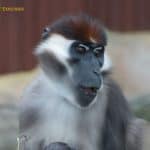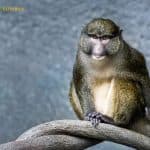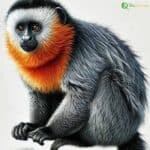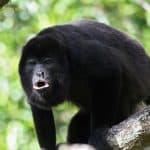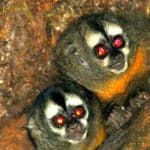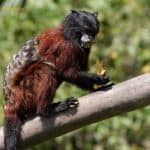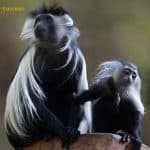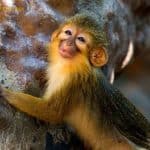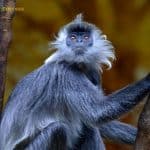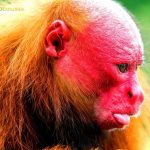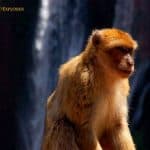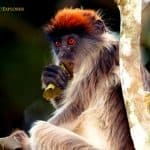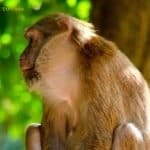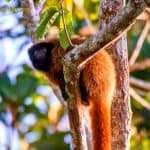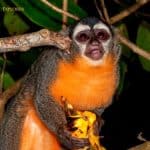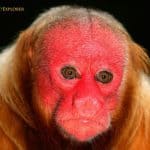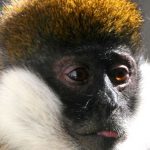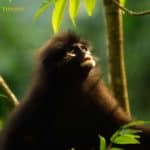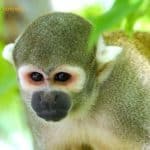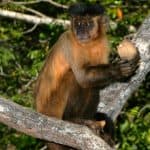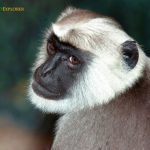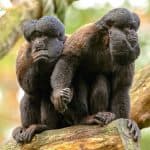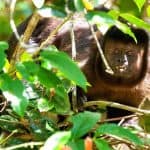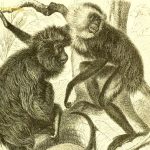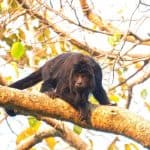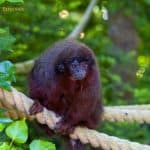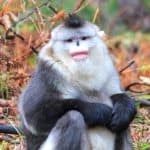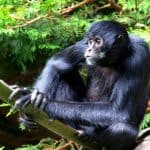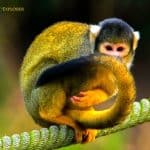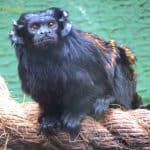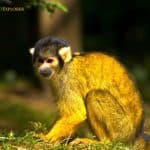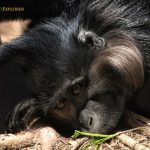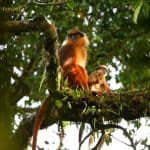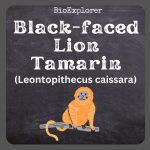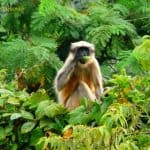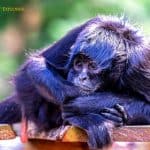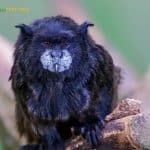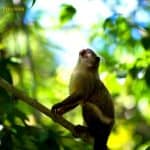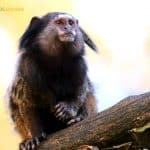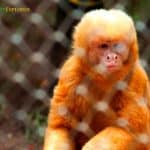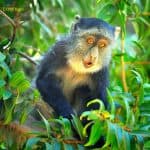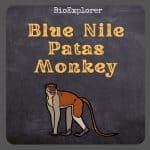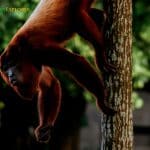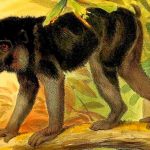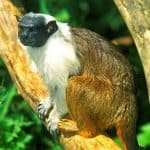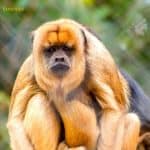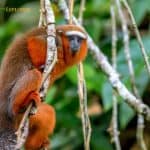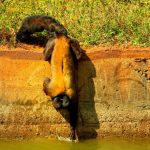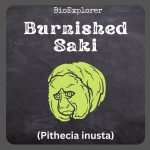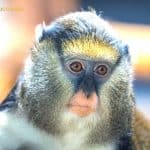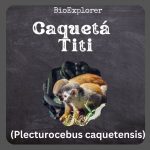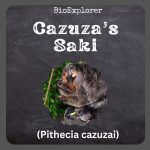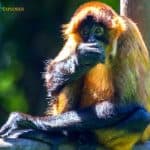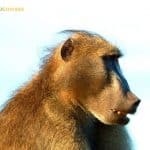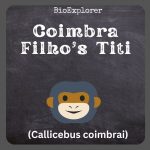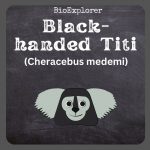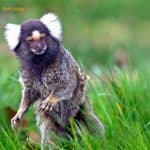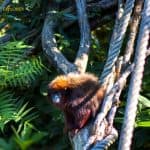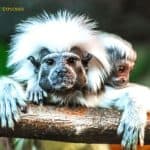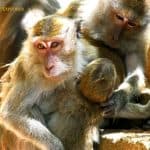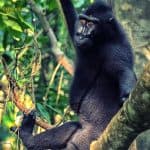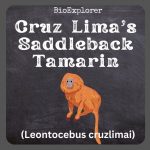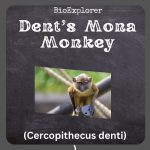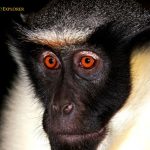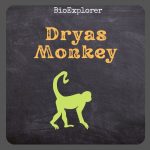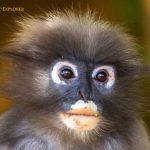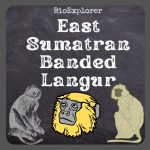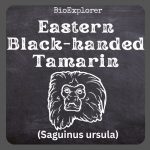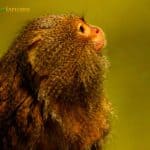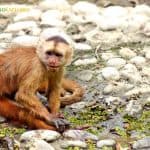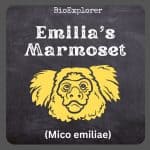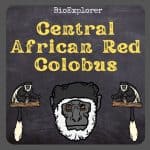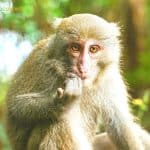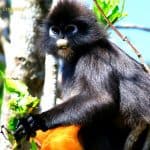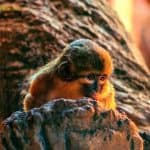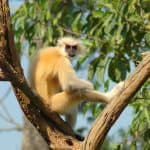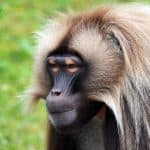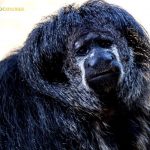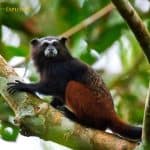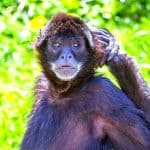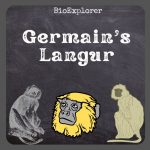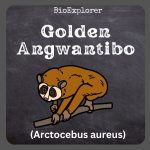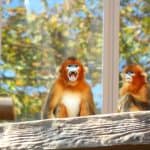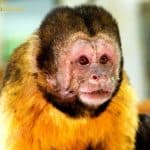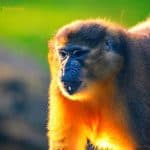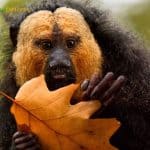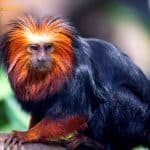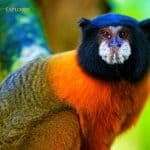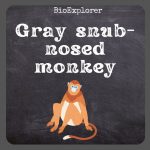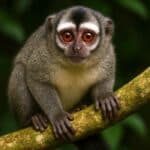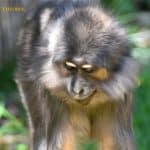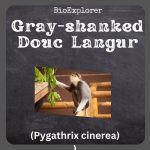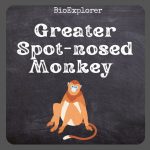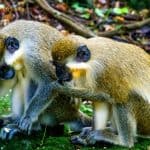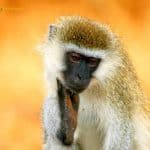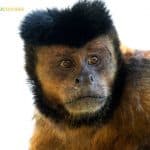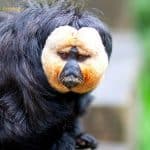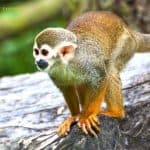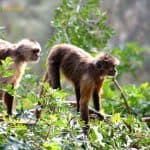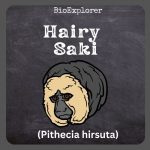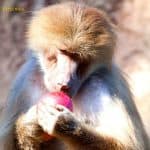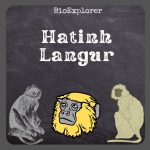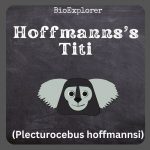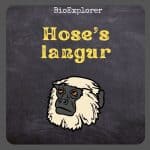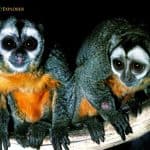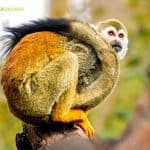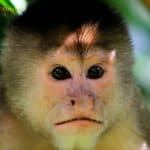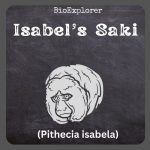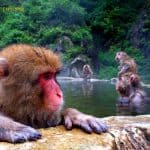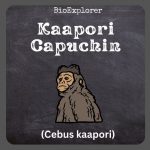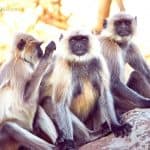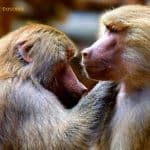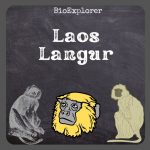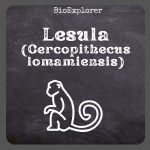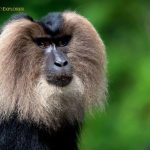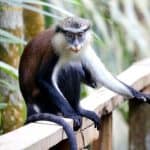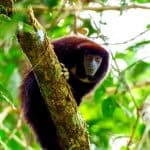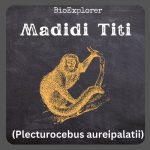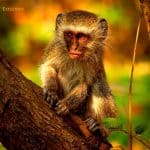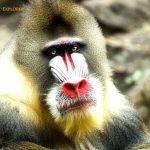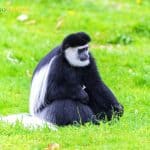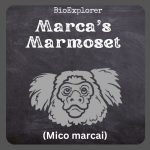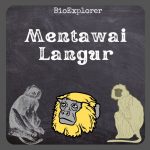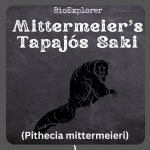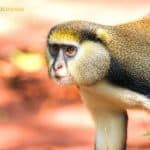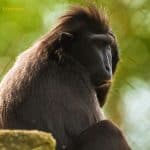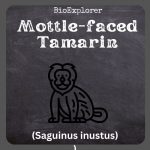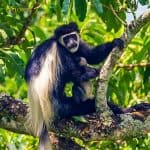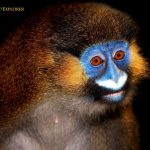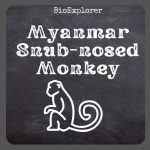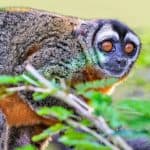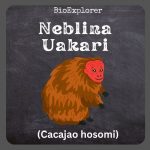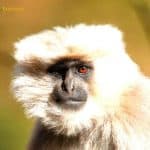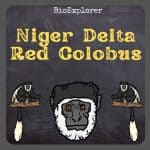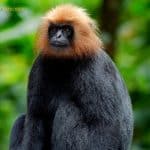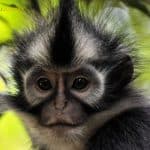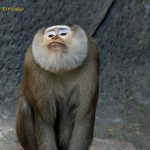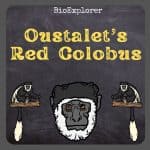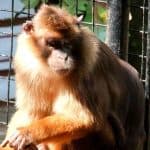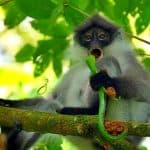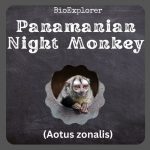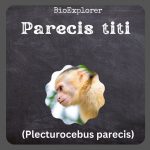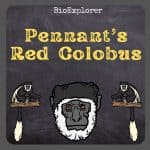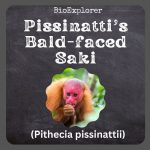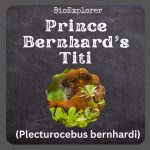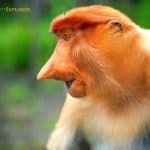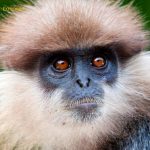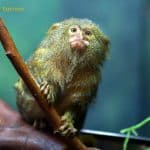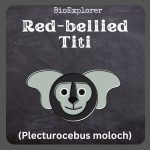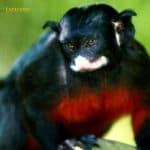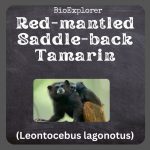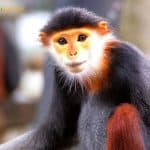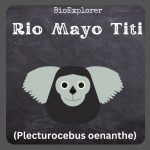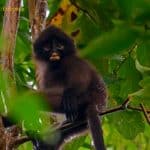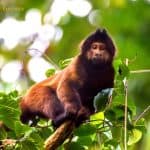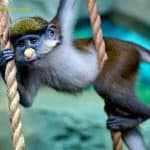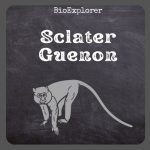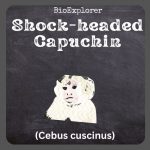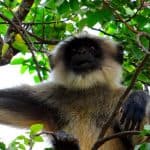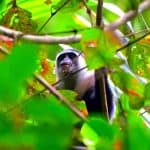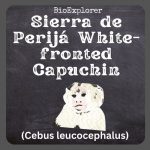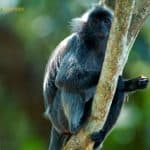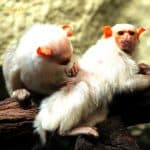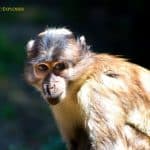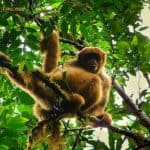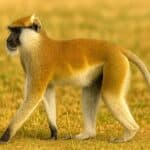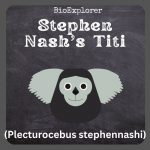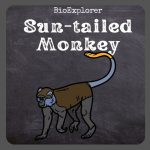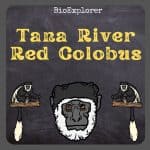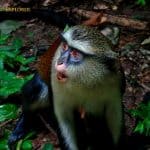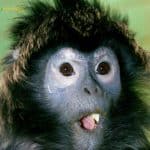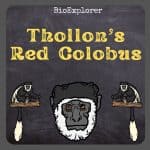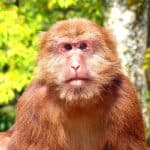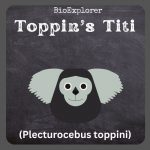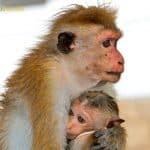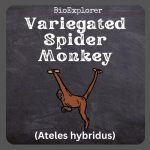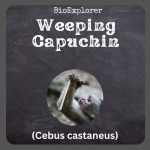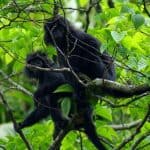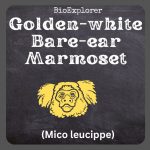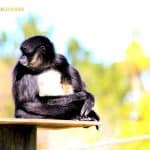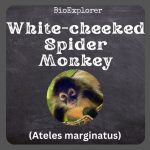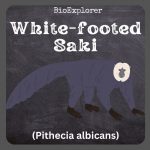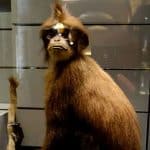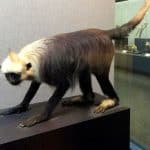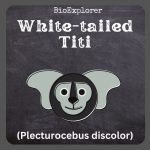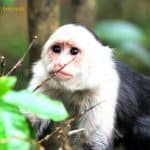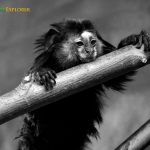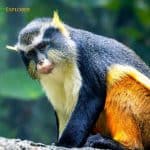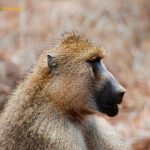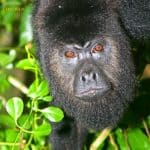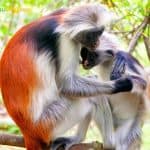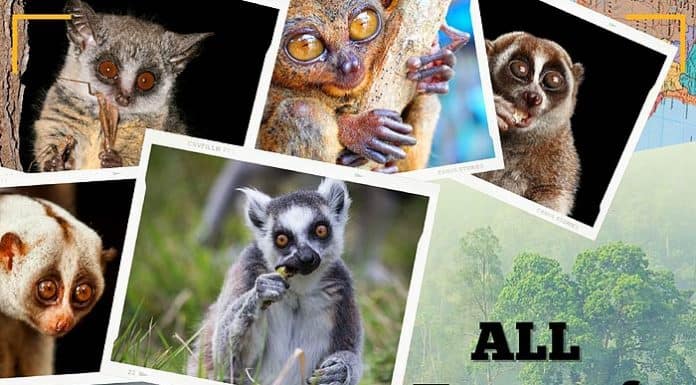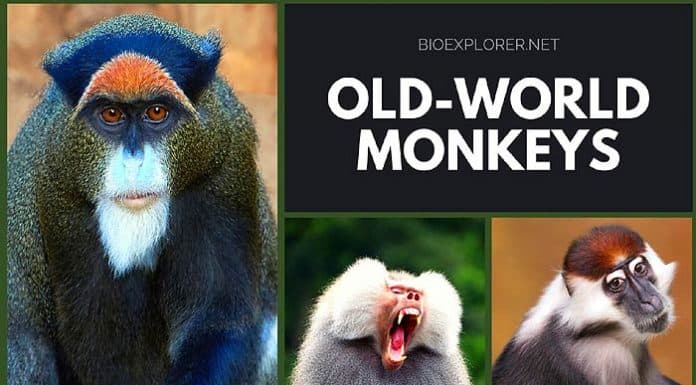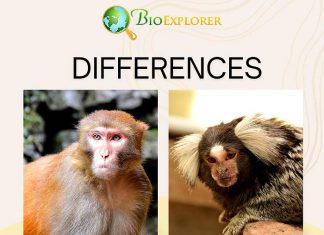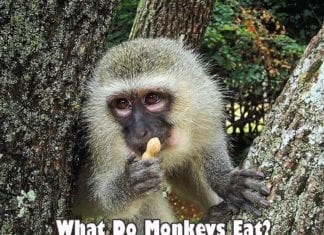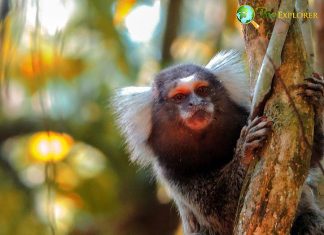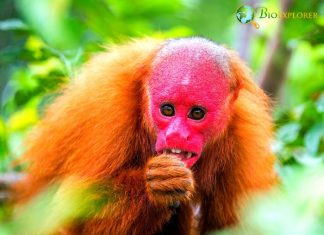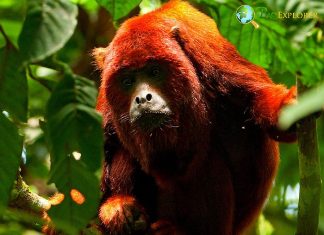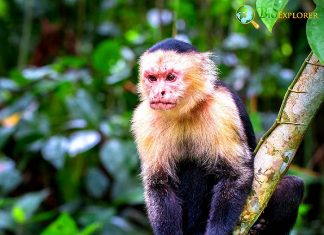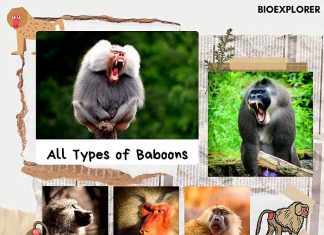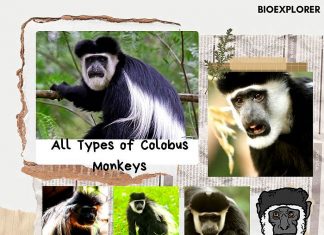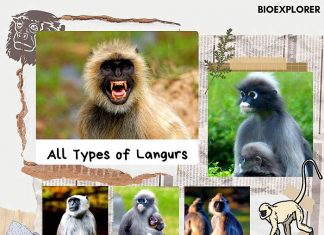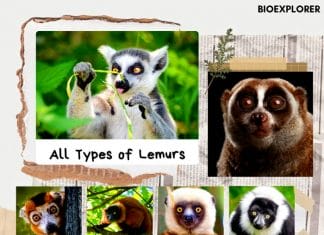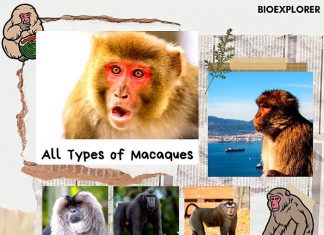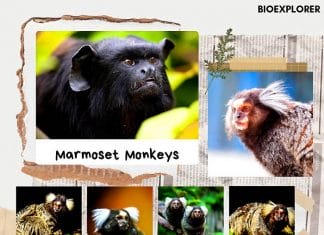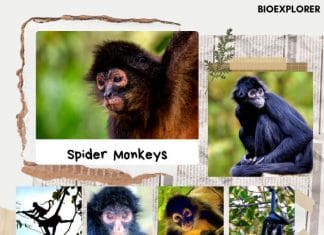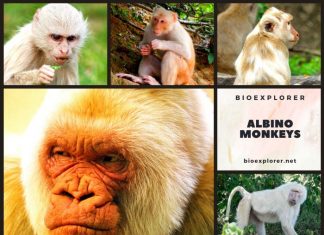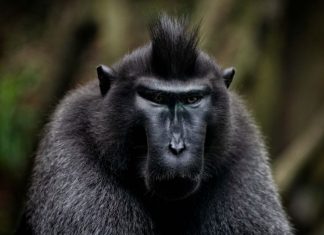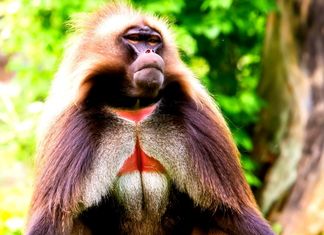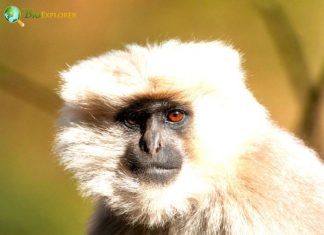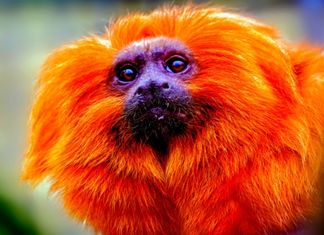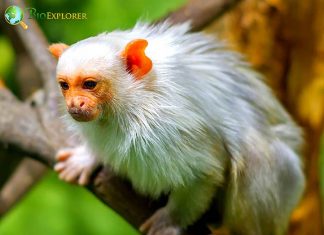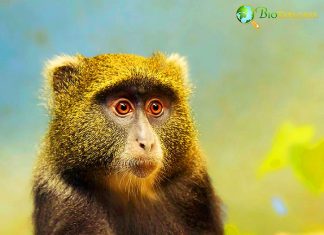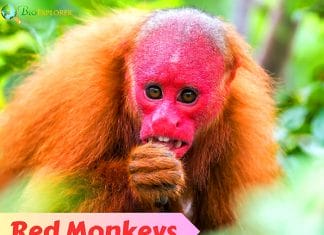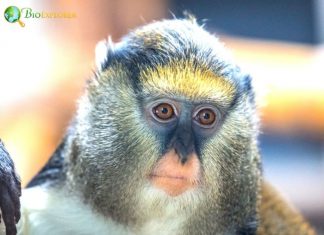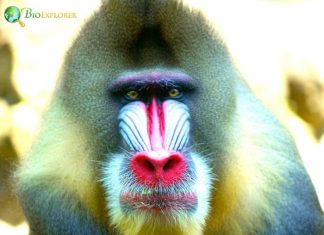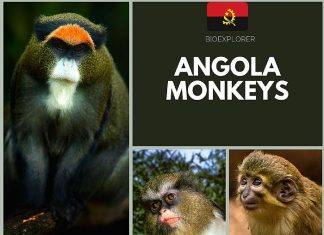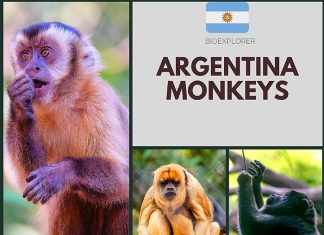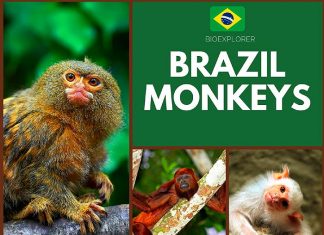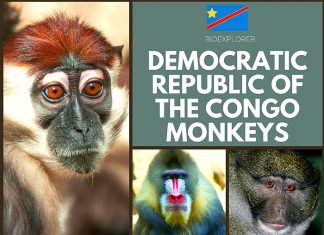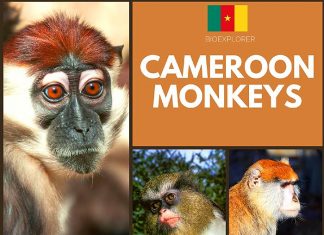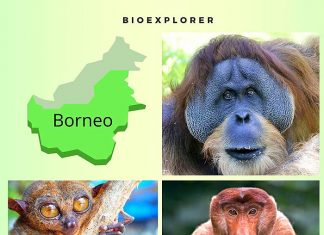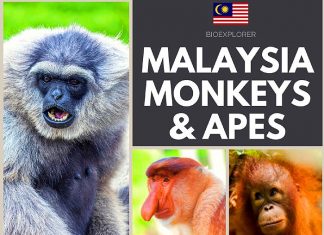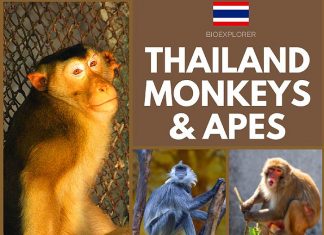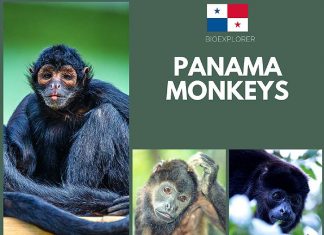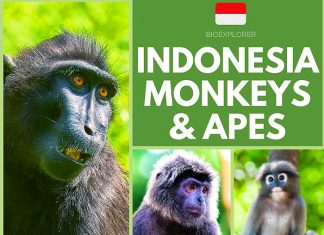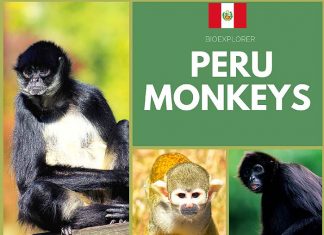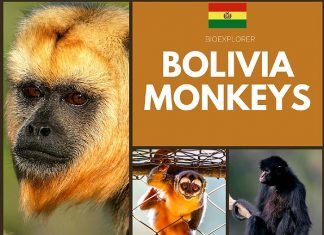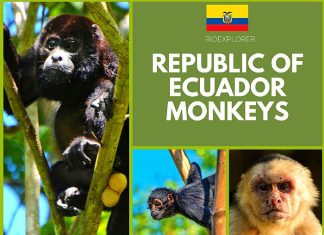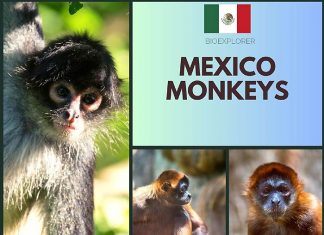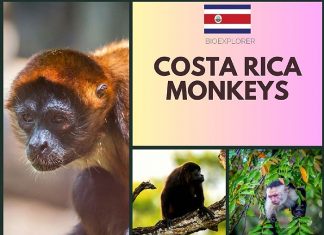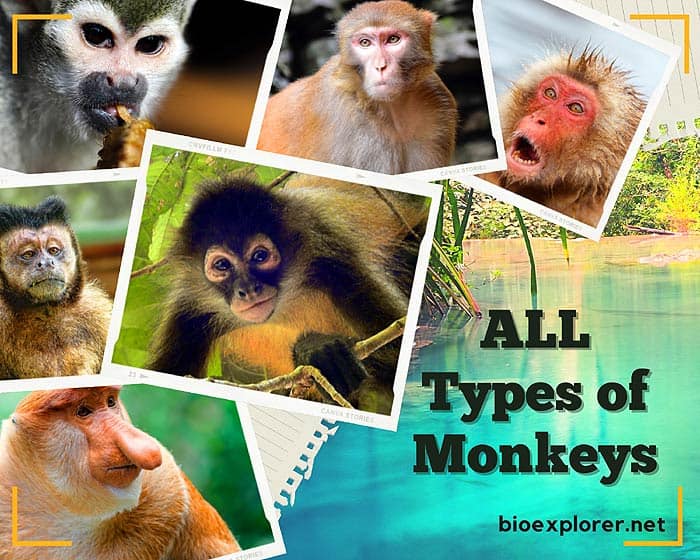
Types of Monkeys: Many things come to mind when you think monkeys. They are often considered to be cute and very intelligent animals. Many species have their characteristics regarding location, size, color, and even abilities.
Monkeys are very vocal animals, which is how they communicate. They emit different tones to protect themselves from danger, call a mate, and communicate with their young.
Monkeys consist of many species throughout the world. On this page, the BioExplorer team explores all types of monkeys in the mammalian world.
Table of Contents
- Different Types of Monkeys
- Classification of Primates
- Monkeys vs. Monkies
- First Grouping of Primates
- Modern Grouping of Primates
- Frequently Asked Questions
- Types of Monkeys By Alphabets
- Types of Monkeys By Diet
- Types of Monkeys By Breeds
- Types of Monkeys By Colors
- Types of Monkeys By Habitats
- Types of Monkeys By Countries
 It’s crucial to note that while all monkeys are primates, not all primates are monkeys. Prosimians (including lemurs, lorises, and tarsiers) and apes (both great and lesser) are distinct groups within the primate order and are not classified as monkeys. This common misconception often leads to confusion, but understanding these distinctions is key to appreciating the diversity of the primate family tree.
It’s crucial to note that while all monkeys are primates, not all primates are monkeys. Prosimians (including lemurs, lorises, and tarsiers) and apes (both great and lesser) are distinct groups within the primate order and are not classified as monkeys. This common misconception often leads to confusion, but understanding these distinctions is key to appreciating the diversity of the primate family tree.
Different Types of Monkeys
Agile Mangabey
Allen’s Swamp Monkey
Alta Floresta Titi
Amazon Black Howler
Andean Night Monkey
Andean Saddle-back Tamarin
Angolan Colobus
Angolan Talapoin
Annamese Silvered Langur
Aracá Uakari
Arunachal Macaque
Ashy Black Titi
Ashy Red Colobus
Assam Macaque
Atlantic Titi
Azara’s Night Monkey
Bald Uakari
Bale Monkey
Banded Langur
Barbara Brown’s Titi
Barbary Macaque
Bare-eared Squirrel Monkey
Bearded Capuchin
Bearded Saki
Bengal Sacred Langur
Black and White Langur
Black Bearded Saki
Black Capuchin
Black colobus
Black Howler monkey
Black Lion Tamarin
Black Snub-nosed Monkey
Black Spider Monkey
Black Squirrel Monkey
Black Sumatran Langur
Black Tamarin
Black Titi
Black Uakari
Black-capped Squirrel Monkey
Black-crested mangabey
Black-Crested Sumatran Langur
Black-faced Lion Tamarin
Black-footed Gray Langur
Black-fronted Titi
Black-headed Marmoset
Black-headed Night Monkey
Black-Headed Spider Monkey
Black-mantled Tamarin
Black-shanked Douc Langur
Black-Tailed Marmoset
Black-Tufted Marmoset
Blond Capuchin
Blue Monkey
Blue Nile Patas Monkey
Bolivian Red Howler
Bonnet Macaque
Booted Macaque
Bouvier’s Red Colobus
Brazilian Bare-Faced Tamarin
Brown Howler Monkey
Brown Titi
Brown Weeper Capuchin
Brown-backed Bearded Saki
Brown-mantled Tamarin
Brumback’s Night Monkey
Buffy-headed Marmoset
Buffy-tufted Marmoset
Burnished Saki
Campbell’s Mona Monkey
Capped Langur
Caquetá Titi
Cat Ba Langur
Cazuza’s Saki
Central American Squirrel Monkey
Chacma Baboon
Chacoan Titi Monkey
Chestnut-bellied Titi
Coastal Black-handed Titi
Coimbra Filho’s Titi
Collared Mangabey
Collared Titi
Collins’ Squirrel Monkey
Colombian Black-handed Titi
Common Marmoset
Coppery Titi
Cotton-Top Tamarin
Crab-Eating Macaque
Crested Black Macaque
Crested Mona Monkey
Cross Marked Langur
Cruz Lima’s Saddleback Tamarin
De Brazza’s Monkey
Delacour’s Langur
Dent’s Mona Monkey
Diana Monkey
Drill
Dryas Monkey
Dusky Langur
East Javan Langur
East Sumatran Banded Langur
Eastern Black-handed Tamarin
Eastern Pygmy Marmoset
Ecuadorian Capuchin
Ecuadorian Squirrel Monkey
Emilia’s Marmoset
Emperor Tamarin
Equatorial Saki
Foa’s Red Colobus
Formosan Rock Macaque
François’ Langur
Gabon Talapoin
Gee’s Golden Langur
Gelada
Geoffroy’s Monk Saki
Geoffroy’s Saddleback Tamarin
Geoffroy’s Spider Monkey
Geoffroy’s Tamarin
Germain’s Langur
Goeldi’s Marmoset
Gold-And-White Marmoset
Golden Angwantibo
Golden Lion Tamarin
Golden Snub-Nosed Monkey
Golden-Bellied Capuchin
Golden-Bellied Mangabey
Golden-faced Saki
Golden-Headed Lion Tamarin
Golden-mantled Tamarin
Gorontalo Macaque
Gray Snub-Nosed Monkey
Gray-bellied Night Monkey
Gray-Cheeked Mangabey
Gray-handed Night Monkey
Gray-Shanked Douc Langur
Gray’s Bald-faced Saki
Greater Spot-Nosed Monkey
Green Monkey
Grivet Monkey
Guianan Brown Capuchin
Guianan Saki
Guianan Squirrel Monkey
Guianan Weeper Capuchin
Guinea Baboon
Guyanan Red Howler Monkey
Hairy Saki
Hamadryas Baboon
Hamlyn’s Monkey
Hatinh Langur
Heck’s Macaque
Hershkovitz’s Marmoset
Highland Mangabey
Hoffmann’s Titi
Hooded Capuchin
Hose’s Langur
Humboldt’s Night Monkey
Humboldt’s Squirrel Monkey
Humboldt’s White Capuchin
Humboldt’s Woolly Monkey
Illiger’s Saddle-Back Tamarin
Indochinese Black Langur
Indochinese Grey Langur
Isabel’s Saki
Japanese Macaque
Javan Surili
Kaapori Capuchin
Kashmir Gray Langur
Kinda Baboon
King Colobus
Lake Baptista Titi
Lang’s Red Colobus
Laotian Langur
Lesser Spotted-Nosed Monkey
Lesson’s Saddle-Back Tamarin
Lesula
Lion-Tailed Macaque
Lomami Red Colobus
Lowe’s Mona Monkey
Lucifer Titi
Madidi Titi
Malbrouck
Mandrill
Mantled Guereza
Mantled Howler Monkey
Maranhão Red-Handed Howler
Marca’s Marmoset
Maroon Langur
Martins’ Tamarin
Maués Marmoset
Mentawai Langur
Midas Tamarin
Miller’s Langur
Miller’s Saki
Milton’s Titi
Miss Waldron’s Red Colobus
Mitered Langur
Mittermeier’s Tapajós Saki
Mona Monkey
Moor Macaque
Mottle-faced Tamarin
Mount Kilimanjaro Guereza
Moustached Guenon
Moustached Tamarin
Munduruku Marmoset
Myanmar Snub-nosed Monkey
Nancy Ma’s Night Monkey
Napo Saki
Natuna Island Surili
Neblina Uakari
Nepal Gray Langur
Niger Delta Red Colobus
Nilgiri Langur
North Sumatran Leaf Monkey
Northern Muriqui
Northern Pig-tailed Macaque
Olive Baboon
Olive Colobus
Ollala Brothers’ Titi
Ornate Titi
Oustalet’s Red Colobus
Pagai Island Macaque
Pale-Thighed Langur
Panamanian Night Monkey
Panamanian White-faced Capuchin
Parecis Titi
Patas Monkey
Pennant’s Red Colobus
Peruvian Spider Monkey
Peruvian White-fronted Capuchin
Peruvian Yellow-tailed Woolly Monkey
Phayre’s Langur
Pig-tailed Langur
Pissinatti’s Bald-faced Saki
Popa Langur
Preuss’s Monkey
Preuss’s Red Colobus
Prince Bernhard’s Titi
Proboscis Monkey
Purple-faced Langur
Pygmy Marmoset (Finger Monkey)
Red Howler Monkey
Red-backed Bearded Saki
Red-bellied Monkey
Red-bellied Titi
Red-Chested Mustached Tamarin
Red-eared Guenon
Red-handed Howler
Red-headed Titi
Red-mantled Saddle-Back Tamarin
Red-Shanked Douc Langur
Rhesus Macaque
Rio Acari Marmoset
Rio Beni Titi
Río Cesar White-fronted Capuchin
Rio Mayo Titi
Robinson’s Banded Langur
Robust Capuchin Monkey
Roloway Monkey
Rondon’s Marmoset
Roosmalens’ Dwarf Marmoset
Ryland’s Bald-faced Saki
Saban Grizzled Langur
Sanje Mangabey
Santa Marta White-fronted Capuchin
Santarem Marmoset
Satéré Marmoset
Schmidt’s Red-tailed Monkey
Schneider’s Marmoset
Sclater’s Guenon
Selangor Silvered Langur
Semliki Red Colobus
Shan State Langur
Shock-headed Capuchin
Shortridge’s Capped Langur
Siberut Langur
Siberut Macaque
Sierra De Perijá White-fronted Capuchin
Silvered Langur
Silvery Brown Bare-face Tamarin
Silvery Marmoset
Sooty Mangabey
Southern Muriqui
Southern Patas Monkey
Spix’s Night Monkey
Spix’s Red-handed Howler
Spix’s White-fronted Capuchin
Stephen Nash’s Titi
Stump-tailed Macaque
Sun-Tailed Monkey
Sunda Pig-Tailed Macaque
Tana River Mangabey
Tana River Red Colobus
Tantalus Monkey
Tarai Gray Langur
Tenasserim Langur
Thollon’s Red Colobus
Tibetan Macaque
Tonkean Macaque
Tonkin Snub-Nosed Monkey
Toppin’s Titi
Toque Macaque
Tufted Gray Langur
Udzungwa Red Colobus
Ulindi River Red Colobus
Ursine Colobus
Ursine Howler
Urubamba Brown Titi
Uta Hick’s Bearded Saki
Vanzolini’s Bald-faced Saki
Varied White-fronted Capuchin
Variegated Spider Monkey
Vervet Monkey
Vieira’s Titi
Weddell’s Saddle-Back Tamarin
Weeping Capuchin
West Javan Langur
Western Red Colobus
White Marmoset
White-bellied Spider Monkey
White-Cheeked Macaque
White-cheeked Spider Monkey
White-eared Titi
White-footed Saki
White-fronted Langur
White-headed Langur
White-Headed Marmoset
White-naped Mangabey
White-nosed Saki
White-tailed Titi
White-Throated Capuchin
Wied’s Marmoset
Wolf’s Mona Monkey
Yellow Baboon
Yucatan Black Howler
Zanzibar Red Colobus
![]()
Classification of Primates
Here are 4 major types of primate and their characteristics:
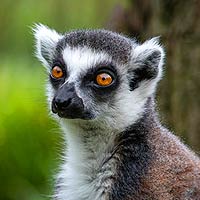
Prosimians
The earliest primates that roamed the earth about 25 million years before monkeys evolved were Prosimians, meaning “pre-monkeys” or “proto-primates”.
- These prosimian species live today, including lemurs, lorises, tarsiers, aye-aye, and bush babies. The prosimians were classified into order Primates mainly because their hands with flexible fingers and opposable thumbs made it possible to fetch things up.
- Most prosimians rely heavily on a sense of smell for communication and finding food. With the tarsier, eyesight has become more critical as it can swivel its head 180 degrees in each direction. On the other hand, the apes and monkeys rely primarily on their sight.
Today, Prosimians live in some parts of Asia and Africa, especially Madagascar. No prosimian species are found in the Americas or Australia.
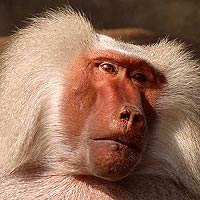
Old-World Monkeys
Old World Monkeys are a mixed group of primates with varied body sizes (medium to large-sized), habitats, diets, social behaviors, and anatomical differences.
- All Old-World monkeys are classified under two families: Cercopithecinae and Colobinae.
- Unique characteristics-wise, Old-World monkeys have downward-pointing nostrils, tend to stay mainly on the ground than trees (non-arboreal), and have a simple digestive system with cheek pouches for plant matters. Also, these primates have a tail which makes them different from apes.
- The Old-World monkeys hail from various countries in South and East Asia, the Middle East, and Africa, except for Madagascar.
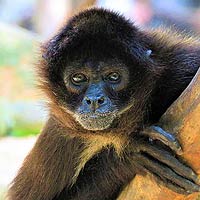
New-World Monkeys
New World monkeys are a varied group of small to medium-sized arboreal (i.e., living on trees) primates.
- These primates are restricted to the tropical forests of Southern Mexico and Central and Latin America.
- Taxonomically, New World monkeys are classified into two prominent families Cebidae and Callitricidae.
- Exclusive attributes-wise, these kinds of monkeys are primarily herbivores, twin births, and no-cheek-pouches unlike Old-World counterparts, and some have a prehensile tail (Spider monkeys).
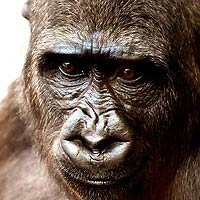
Apes
Apes are another clade of old-world monkeys collectively called Hominoidea, native to Africa and Southeast Asian countries.
- Apes do not have tails (except L’Hoest monkey – a great ape) due to the mutation of the TXBT[4] gene cell.
- Also, apes cannot perform brachiation (arm swinging in the arboreal movements on tree tops, unlike the other three kinds listed above).
- There are two main branches of apes: gibbons (“lesser apes”) and hominids (“great apes”). Orangutans, gorillas, chimpanzees, and bonobos are examples of greater apes, whereas the lesser apes contain all types of gibbons, including Lar gibbon, Agile gibbon, Silvery gibbon, and more.
Hominoids are swift tree climbers except for gorillas and humans. Apes feed on various plants such as fruits, leaves, stalks, seeds, roots, and small animals.
Monkeys vs. Monkies

Let’s get one of the fundamental confusion out of the way first. Is it monkeys or monkies?
When a noun word ends with “y”, there is always confusion as to whether the plural form ends with “ies” or “ys”.
Many English dictionary sources say the grammar rule is simple. When a noun ends with a vowel followed by y, the plural form gets an “s”; otherwise, it would end with “ies”.
For instance, the plural form of “Dictionary” is “Dictionaries”.
Based on that principle, the plural form of monkey is indeed monkeys.
First Grouping of Primates

An English biologist, St. George Jackson Mivart first published the classification of primates in his book ‘Man and Apes’ in 1873[1]. His categorization of monkeys was based purely on anatomical differences, habits, and geographical distribution. According to this book, the early classification of order Primates contained two sub-groups, namely:
- Group-1: Man, and all the apes, which were first called Anthropoidea.
- Group-2: All Lemurs and the animals most like them were called Lemuroidea; the creatures contained in it when spoken of being generally also termed “Half-apes” or “Lemuroids“.
Modern Grouping of Primates
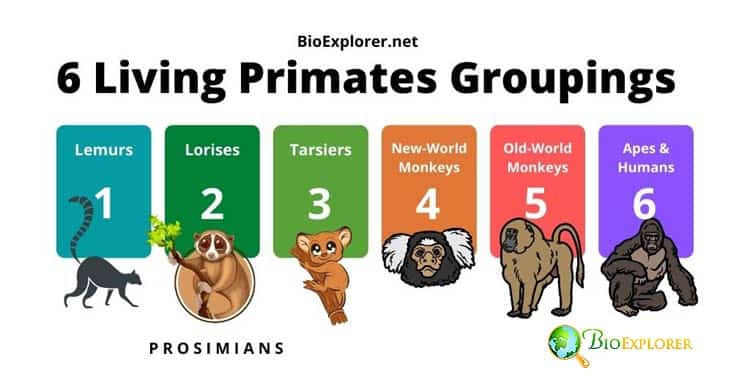
After so many debates and further data collection and analyses and discoveries of new monkey species over a century, another British-born biological anthropologist, Robert D. Martin, currently a curator at Chicago Natural Museum, has published an excellent book called “Primate Origins and Evolution: A Phylogenetic Reconstruction” in 1994[2]. This research attempted to classify living primates into 6 different sub-groups based on geographical importance.
| 1 | Lemurs | Madagascar | |
| 2 | Lorises and bushbabies | Africa and Asia | Prosimians |
| 3 | Tarsiers | Southeast Asia | |
| 4 | Marmosets, Tamarins, Capuchins, Squirrel monkeys, Owl monkeys, Titis, Sakis, and Howlers (Ceboidea) | South and Latin America | New World Monkeys |
| 5 | Talapoins, Guenons, Baboons, Colobus, Macaques, Vervets, Geladas, Mangabeys, Langurs, Mandrills, Surili, Patas, Proboscis Monkeys (Cercopithecoids meaning “elongated apes“) | Africa and Asia | Old World Monkeys |
| 6 | Apes and humans (Hominoids) | Africa and Asia | Apes |
This primate grouping is based on grade or level of organization, and in no way does it implies any superiority or inferiority between them.
According to the fossil study in Tanzania by paleontologists in 2013[3], it became evident that the old-world monkeys (baboons, macaques) and apes (humans & chimpanzees) were already separated 25 million years ago!
Frequently Asked Questions
What are the most common monkey?
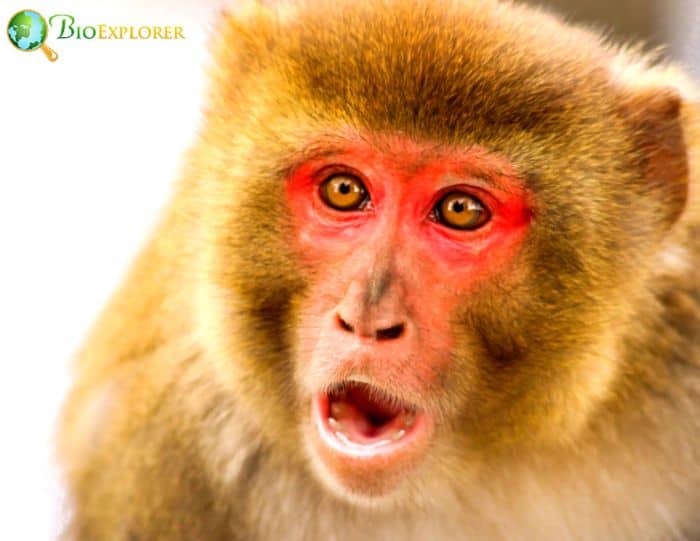
The Rhesus macaque is one of the most common monkeys, especially in Asia. Found in diverse habitats, from grasslands to urban areas, they have a wide distribution. Another prevalent species is the Vervet monkey, native to Africa and known for its adaptability to various environments.
What is the most friendliest monkey?
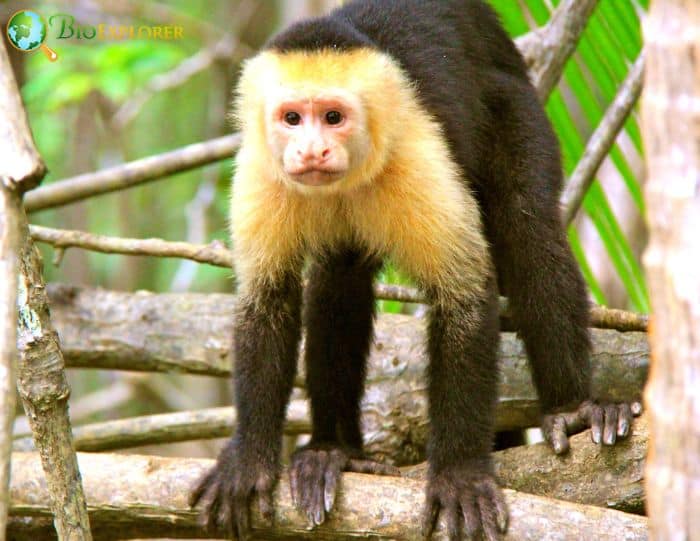
The capuchin monkey is often considered the friendliest among monkey species. Renowned for its sociable behavior, intelligence, and playful nature, it frequently interacts positively with humans, making it a popular choice in the pet trade and entertainment industries. However, like all primates, they have complex needs and can be challenging to care for.
What is a monkey that starts with G?
A monkey that starts with “G” is the “Golden lion tamarin“. It’s a small New World monkey known for its bright reddish-orange fur and mane, resembling a lion’s. They are native to the Atlantic coastal forests of Brazil.
Suggested Reading:
Monkeys Starting with G
What are the two main types of monkeys?
The two types of monkeys are:
Old World Monkeys: Native to Africa and Asia, they include species like baboons, macaques, and colobus monkeys.
New World Monkeys: Found in Central and South America, they include capuchins, howler monkeys, and tamarins.
Old World Monkeys Vs. New World Monkeys
How many types of monkeys are there in the world?
As of 2023, there are over 330 different species of monkeys in the world, classified into two main groups: Old World Monkeys and New World Monkeys.
Which is the smallest monkey?
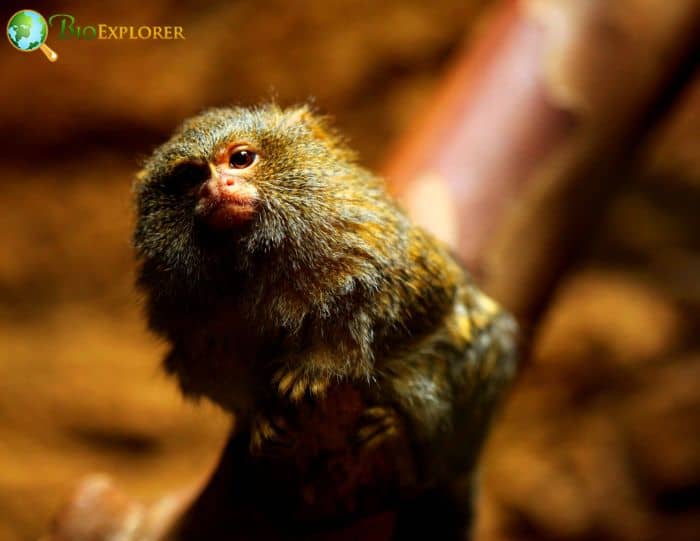
The smallest monkey is the pygmy marmoset (Cebuella pygmaea). It weighs around 100 grams (3.5 ounces) and measures about 4.6 to 6.2 inches (11.7 to 15.8 cm) in length, excluding its tail. Native to the rainforests of the western Amazon Basin in South America, pygmy marmosets are known for their tiny size and distinctive vocalizations.
Types of Monkeys By Alphabets

Monkey Names Starting with A

Monkey Names Starting with C

Monkey Names Starting with E

Monkey Names Starting with G

Monkey Names Starting with I

Monkey Names Starting with K

Monkey Names Starting with M

Monkey Names Starting with O

Monkey Names Starting with R

Monkey Names Starting with T

Monkey Names Starting with V

Monkey Names Starting with Y

Monkey Names Starting with B

Monkey Names Starting with D

Monkey Names Starting with F

Monkey Names Starting with H

Monkey Names Starting with J

Monkey Names Starting with L

Monkey Names Starting with N

Monkey Names Starting with P

Monkey Names Starting with S

Monkey Names Starting with U

Monkey Names Starting with W

Monkey Names Starting with Z
![]()
Types of Monkeys By Diet
What Do Monkeys Eat?
Carnivorous Monkeys
Frugivorous Monkeys
Herbivorous Monkeys
Omnivorous Monkeys
![]()
Types of Monkeys By Breeds
Colobus Monkeys
Types of Lemurs
Marmoset Monkeys
Spider Monkeys
![]()
Types of Monkeys By Colors
Albino Monkeys
Black Monkeys
Brown Monkeys
Gray Monkeys
Orange Monkeys
White Monkeys
Green Monkeys
Red Monkeys
Yellow Monkeys
![]()
Types of Monkeys By Habitats
Types of Rainforest Monkeys
![]()
Types of Monkeys By Countries
Angolan Monkeys
Argentinian Monkeys
Indian Monkeys
Brazilian Monkeys
Democratic Republic of the Congo Monkeys
Cameroon Monkeys
Borneo Monkeys & Apes
Malaysian Monkeys
Thailand Monkeys & Apes
Panamian Monkeys
Indonesian Monkeys & Apes
Peruvian Monkeys
Bolivian Monkeys
Ecuadorian Monkeys
Mexico Monkeys
Costa Rica Monkeys: A Journey into the Rich Biodiversity!
Gibraltar Monkeys
![]()


